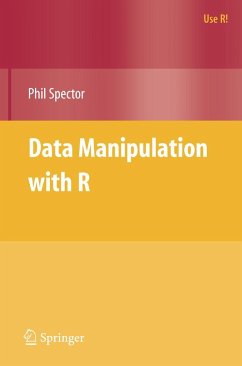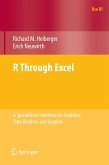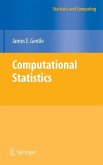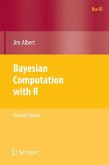This book presents an array of methods applicable for reading data into R, and efficiently manipulating that data. In addition to the built-in functions, a number of readily available packages from CRAN (the Comprehensive R Archive Network) are also covered.
The R language provides a rich environment for working with data, especially data to be used for statistical modeling or graphics. Coupled with the large variety of easily available packages, it allows access to both well-established and experimental statistical techniques. However techniques that might make sense in other languages are often very ine?cient in R, but, due to R's ?- ibility, it is often possible to implement these techniques in R. Generally, the problem with such techniques is that they do not scale properly; that is, as the problem size grows, the methods slow down at a rate that might be unexpected. The goal of this book is to present a wide variety of data - nipulation techniques implemented in R to take advantage of the way that R works,ratherthandirectlyresemblingmethodsusedinotherlanguages. Since this requires a basic notion of how R stores data, the ?rst chapter of the book is devoted to the fundamentals of data in R. The material in this chapter is a prerequisite for understanding the ideas introduced in later chapters. Since one of the ?rst tasks in any project involving data and R is getting the data into R in a way that it will be usable, Chapter 2 covers reading data from a variety of sources (text ?les, spreadsheets, ?les from other programs, etc. ), as well as saving R objects both in native form and in formats that other programs will be able to work with.
The R language provides a rich environment for working with data, especially data to be used for statistical modeling or graphics. Coupled with the large variety of easily available packages, it allows access to both well-established and experimental statistical techniques. However techniques that might make sense in other languages are often very ine?cient in R, but, due to R's ?- ibility, it is often possible to implement these techniques in R. Generally, the problem with such techniques is that they do not scale properly; that is, as the problem size grows, the methods slow down at a rate that might be unexpected. The goal of this book is to present a wide variety of data - nipulation techniques implemented in R to take advantage of the way that R works,ratherthandirectlyresemblingmethodsusedinotherlanguages. Since this requires a basic notion of how R stores data, the ?rst chapter of the book is devoted to the fundamentals of data in R. The material in this chapter is a prerequisite for understanding the ideas introduced in later chapters. Since one of the ?rst tasks in any project involving data and R is getting the data into R in a way that it will be usable, Chapter 2 covers reading data from a variety of sources (text ?les, spreadsheets, ?les from other programs, etc. ), as well as saving R objects both in native form and in formats that other programs will be able to work with.
From the reviews:
"This comprehensive, compact and concise book provides all R users with a reference and guide to the mundane but terribly important topic of data manipulation in R. ... This is a book that should be read and kept close at hand by everyone who uses R regularly."(Douglas M. Bates, International Statistical Reviews, Vol. 76 (2), 2008)
"Presents a wide array of methods applicable for reading statistical data into the R program and efficiently manipulating that data." (Journal of Economic Literature, Vol. 46, no. 3, September 2008)
"R is a programming language particularly suitable for statistical computing and data analysis. ... Using a variety of examples based on data sets included with R, along with easily stimulated data sets, the book is recommended to anyone using R who wishes to advance from simple examples to practical real-life data manipulation solutions." (Christina Diakaki, Zentralblatt MATH, Vol. 1154, 2009)
"The book contains much good information regarding the unique way in which R manipulates data objects. lt provides a complement to the many books illustrating statistical applications of R. It is clear that the author is very familiar with R. and the explanations and illustrations are generally helpful. Personally, I found the chapters on reading and writing data and on data aggregation most helpful, because these topics are essential in exploring data." (Jim Albert, The American Statistician, May 2009, Vol. 63, no. 2)
"Readers of this book will receive a focused treatment of data manipulation ... . This book has lots of examples which are helpful. ... provides more depth to understand the data structure/objects within R and how to better take advantage of this structure. ... I found this book very helpful to my understanding of the structure and will be using it as a reference tool in my work." (Roger M. Sauter, Technometrics, Vol. 52 (3), August,2010)
"This comprehensive, compact and concise book provides all R users with a reference and guide to the mundane but terribly important topic of data manipulation in R. ... This is a book that should be read and kept close at hand by everyone who uses R regularly."(Douglas M. Bates, International Statistical Reviews, Vol. 76 (2), 2008)
"Presents a wide array of methods applicable for reading statistical data into the R program and efficiently manipulating that data." (Journal of Economic Literature, Vol. 46, no. 3, September 2008)
"R is a programming language particularly suitable for statistical computing and data analysis. ... Using a variety of examples based on data sets included with R, along with easily stimulated data sets, the book is recommended to anyone using R who wishes to advance from simple examples to practical real-life data manipulation solutions." (Christina Diakaki, Zentralblatt MATH, Vol. 1154, 2009)
"The book contains much good information regarding the unique way in which R manipulates data objects. lt provides a complement to the many books illustrating statistical applications of R. It is clear that the author is very familiar with R. and the explanations and illustrations are generally helpful. Personally, I found the chapters on reading and writing data and on data aggregation most helpful, because these topics are essential in exploring data." (Jim Albert, The American Statistician, May 2009, Vol. 63, no. 2)
"Readers of this book will receive a focused treatment of data manipulation ... . This book has lots of examples which are helpful. ... provides more depth to understand the data structure/objects within R and how to better take advantage of this structure. ... I found this book very helpful to my understanding of the structure and will be using it as a reference tool in my work." (Roger M. Sauter, Technometrics, Vol. 52 (3), August,2010)








